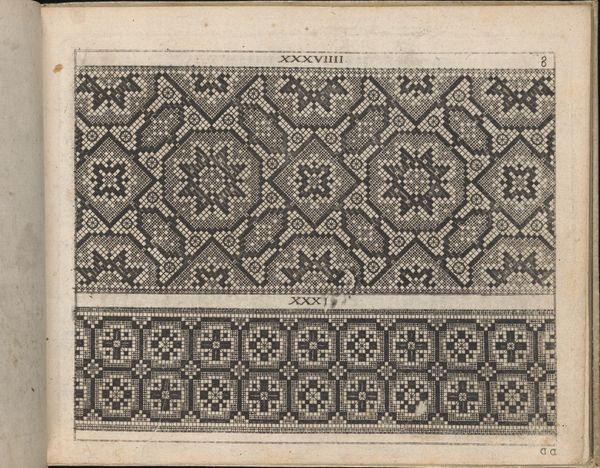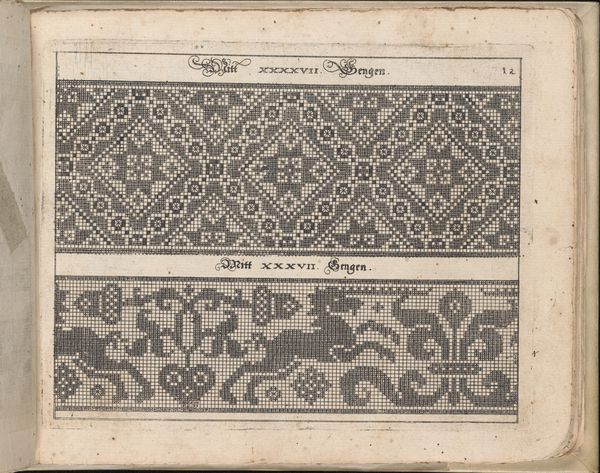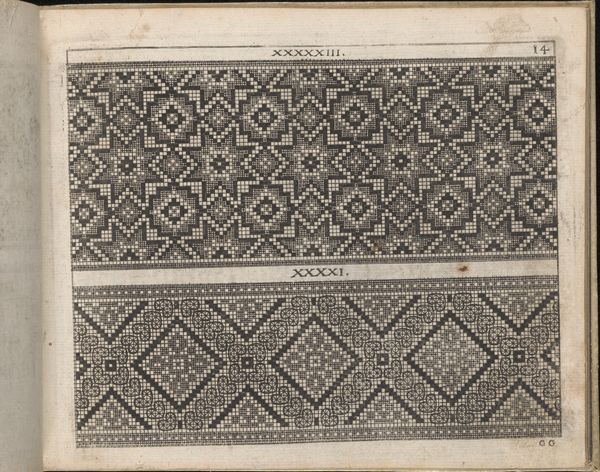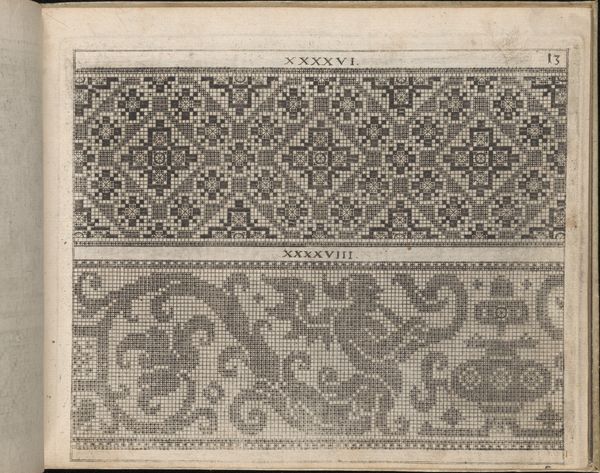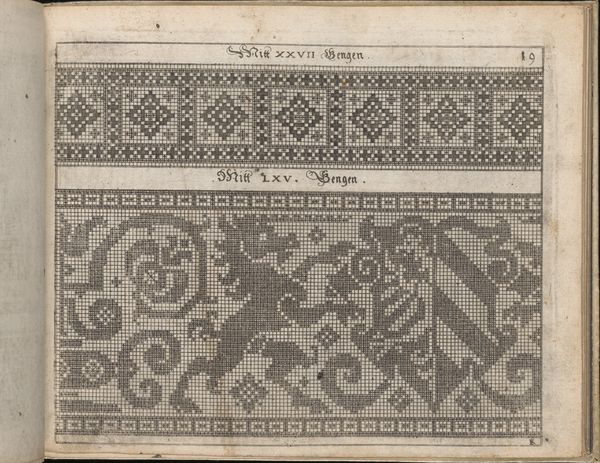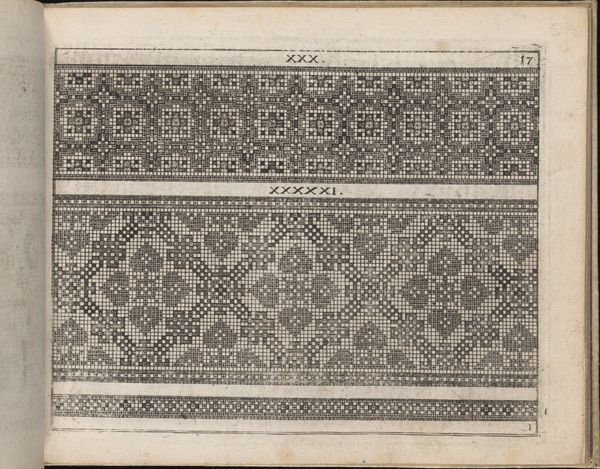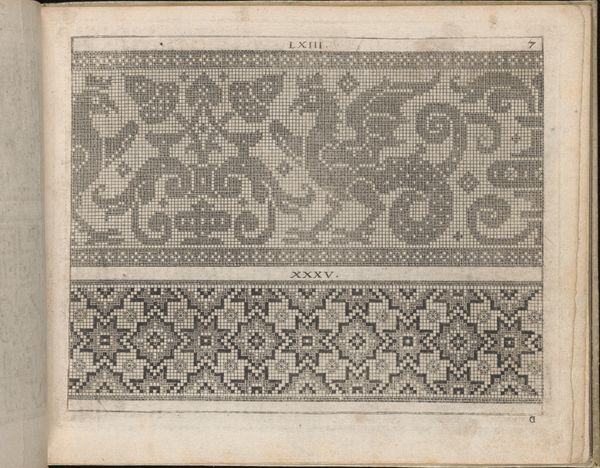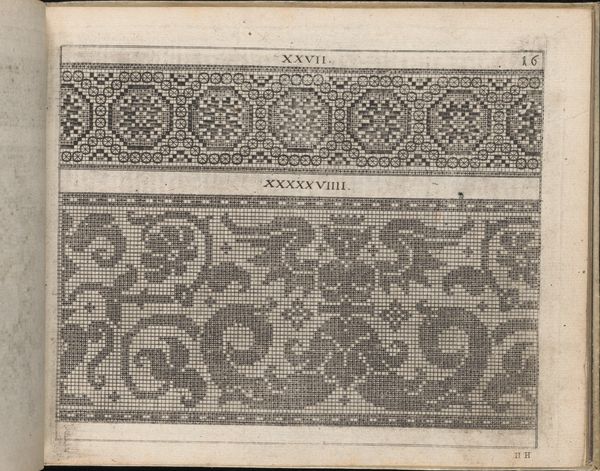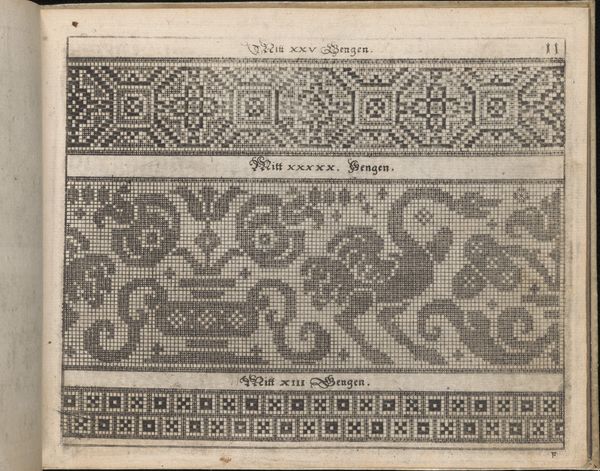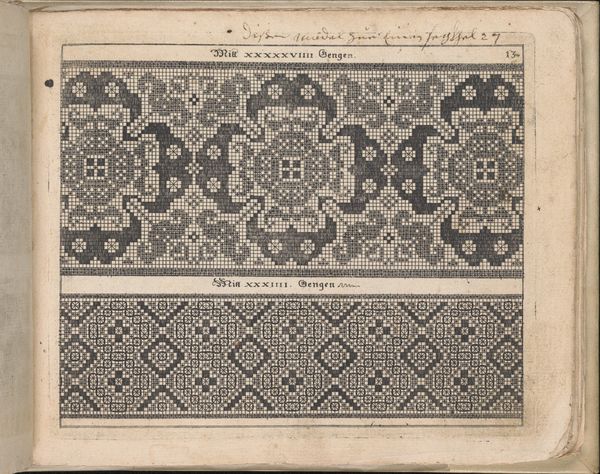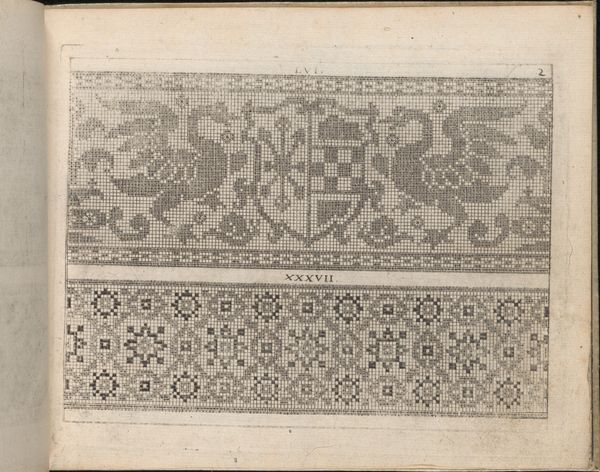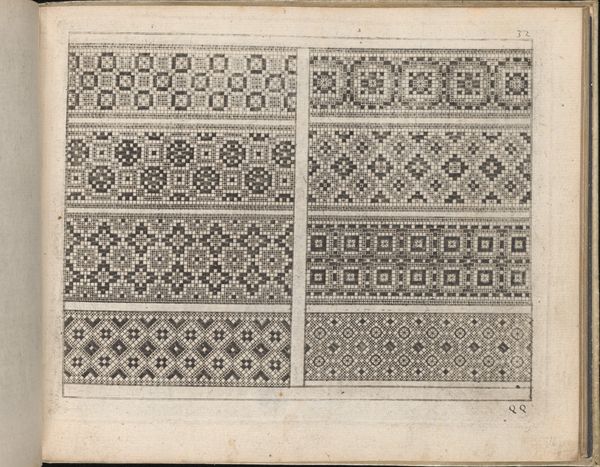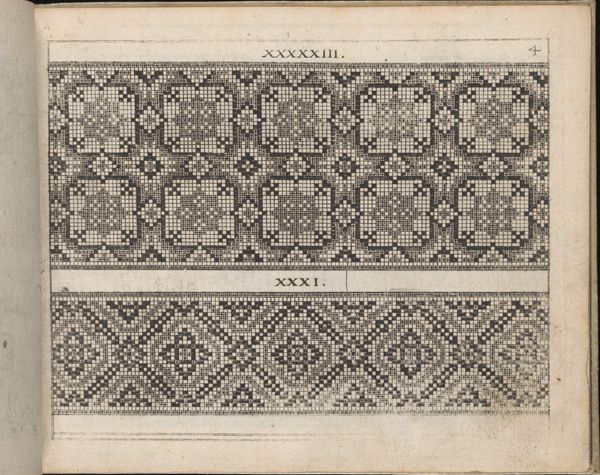
drawing, graphic-art, print, etching
#
drawing
#
graphic-art
# print
#
etching
#
book
#
pattern
#
11_renaissance
#
northern-renaissance
Dimensions: Overall: 5 11/16 x 7 1/16 x 3/4 in. (14.5 x 18 x 1.9 cm)
Copyright: Public Domain
Curator: This is a page, specifically 23r, from Johann Sibmacher's "Newes Modelbuch in Kupffer," created in 1604. The book, a compendium of designs, is an etching, now residing at the Metropolitan Museum. Editor: Whoa. Talk about early pixel art. It's intensely intricate—feels almost meditative, like looking into a kaleidoscope stuck on repeat. Gives me this calm, yet subtly dizzy feeling, if that makes sense. Curator: Absolutely. "Modelbucher" served as pattern books, instrumental in the rise of textile design as a distinct art form. The designs weren't meant to be slavishly copied, but adapted to local materials and tastes, fueling regional variations. Editor: It's weird to think about these static patterns traveling and morphing in real-time textiles. Did individual weavers and seamstresses feel any sense of creative agency using them, or was it more of a craft than a free-wheeling creative endeavor? Curator: That's where it gets fascinating. These books democratized design, empowering artisans outside elite circles. The element of choice, selecting and reinterpreting patterns, injected a level of personal expression into everyday objects. Editor: Still, imagine staring at these tiny squares for hours. Did they take coffee breaks in 17th Century Germany? No wonder tapestries look trippy. Do you ever wonder who designed them or worked from it to create their tapestry version, and wonder, also if they hated it, or were passionate about it? Curator: Questions that often haunt historians, the tension between artistic agency and prescribed form! Remember, these books were commissioned, reproduced, distributed--artistic creation intertwined with commerce, influenced by patronage and market demand. Editor: Right, this wasn't "art for art's sake." More like, "art for the sake of covering drafty castles and keeping people employed. But the very act of replicating, introducing little shifts and imperfections, has to make an object personal somehow. Curator: Precisely. These pages provide a lens for viewing broader cultural dynamics—the rise of print culture, the development of artisan economies, and the shifting definitions of art and design. Editor: All this from some tiny geometric designs, a silent story in black and white, that spoke volumes and got so much bigger and full of color, when it hit its audience and finally existed in the wild. Inspiring.
Comments
No comments
Be the first to comment and join the conversation on the ultimate creative platform.
